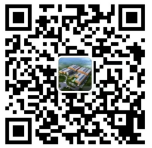
News
 Current Location:Index >> News >> industry news
Current Location:Index >> News >> industry news
 Update Time:2014-08-11
Update Time:2014-08-11
 Clicks:0
Clicks:0
Since the 1990s, the mold industry in East China has continued to develop rapidly, with an average growth rate of over 25% and a total output value exceeding 40 billion yuan. Each province and city has its own characteristics in the development of molds, forming a pattern where Zhejiang, Shandong, and Anhui focus on home appliance and automotive molds, Fujian focuses on home appliance and shoe molds, Jiangsu and Shanghai focus on electronic and automotive molds, and Jiangxi focuses on light industry and aviation molds. The common point here is that most provinces and cities are developing automotive molds, which provides an important cooperation foundation for the formation of a large mold market in East China.
The various regions in East China are geographically connected, culturally similar, economically integrated, and have a close relationship with people. Over the past few decades, cooperation and exchanges in different fields have created a shared cultural environment. The mold industry cluster has driven regional economy and enhanced the competitiveness of mold enterprises in the same region. Bao Mingfei, President of Ningbo Mold Association, and Luo Baihui, Executive Secretary General of the International Mold and Hardware Plastic Industry Suppliers Association, who came to inspect, introduced that in the 1980s, Shanghai's mold technicians supported mold enterprises in Jiangsu and Zhejiang regions; In the late 1990s, mold companies from Jiangsu and Zhejiang regions entered Shanghai, allowing the Shanghai mold industry to recover from the brink of depression. With the introduction of technology from foreign mold companies, the rapid growth of the Shanghai mold industry was facilitated. From the business models of mold parks in Huangyan, Yuyao, Ninghai, Kunshan, Jiangsu and other places in Zhejiang, it can be seen that at that time, in order to overcome the constraints of short development time and poor initial conditions, many mold enterprises concentrated their limited funds and technology into a certain link of the mold industry chain or the entire production and marketing process, fully utilizing the advantages of mold clusters and mold division of labor, integrating and complementing resources through outsourcing, and achieving the goal of reducing costs and shortening delivery time, thus strengthening and developing the mold industry. This practice also accumulated experience for the formation of a large market in the eastern region of China. It can be said that the mold industry in Shanghai is also the mold industry in East China, and this history has reduced administrative and technical barriers for cross regional cooperation of molds in East China.
The East China region has a common mold market. According to Luo Baihui's understanding, Shanghai Automotive Industry Group is in talks with Nanjing Automotive Group to merge in order to allocate market resources reasonably. This indicates that the company's development is breaking through the geographical boundaries of "Shanghai" and extending its tentacles to other provinces, cities, and even abroad. At present, the group's domestic and foreign investment holdings in vehicle enterprises are distributed in Yizheng, Jiangsu, Liuzhou, Guangxi, Yantai, Shandong, Qingdao, Shenyang, Liaoning, Chongqing, as well as South Korea's SsangYong overseas.
Due to the unique geographical environment of Shanghai and its special mission of building the "four centers", it is expected that there will be more and more cooperation projects between Shanghai's automotive industry and other provinces and cities, with a wider scope, which will drive the continuous expansion of the automotive mold market and generate huge impetus for cooperation between regions. At present, the joint meeting of the East China Mold Association has been held for 13 consecutive sessions, and the exchange over the past 13 years has constructed a high-level coordination platform, laying the organizational foundation for the East China mold market.
0555-6971767
